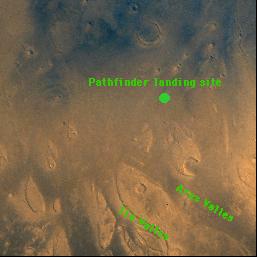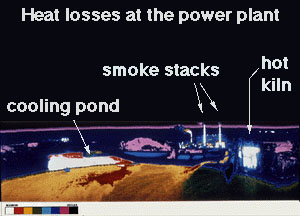Exploratour - The Surface of Mars
Click on image for full size
Image from: NASA/JPL
Leave the Tour and look at the Annotated map of Mars
Floods and Pathfinder
Mars Pathfinder touched down in what appeared to be the remnants of a catastrophic flood. Thus, scientists had the opportunity to study the remains of what is thought to be a surface created by flowing water.
A map of the region, shown here, shows what are called the Ares and Tiu outflow valleys. (An outflow valley is one form of channel created by a catastrophic flood). Ares is the Greek name of the god of War, also called Mars by the Romans. These are to be found on the north-eastern edge of Xanthe Terra (check the large topographic map of Mars). Channels are visible throughout the scene, and may indicate a great deal of drainage in the region.
The two main channels seem to be examples of "straight" channels, rather than meandering river channels. This may mean that during the flood, the water came gushing directly out of the ground. The image also shows many tear-dropped shaped tails around craters in the area, indicating the possibility of much fluvial activity in the past.












